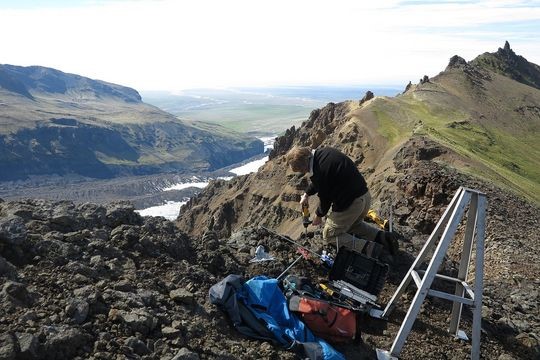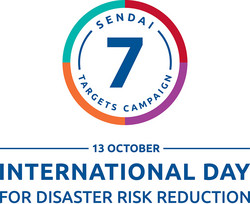30th International Day for Disaster Reduction
Hazard- and risk assessment for natural hazards in Iceland are an important part of IMO's role
The International Day for Disaster Risk Reduction was held the 13th of October as every year since 1989. The day was designated by the United Nations General Assembly, with the aim to promote a global culture of risk-awareness and disaster reduction, including disaster prevention, mitigation and preparedness. The day is an opportunity to create global awareness about disaster risk reduction, the progress made and to encourage further efforts to build disaster resilient communities and nations.
Since the adoption of the Sendai Frameworkfor Disaster Risk Reduction 2015-2030 , in March 2015 in Sendai,
the International Day for Disaster Risk Reduction has been used to promote one
of the seven global targets put forward:
- Substantially reduce global disaster mortality by 2030, aiming to lower the average per 100,000 global mortality rate in the decade 2020–2030 compared to the period 2005–2015;
 Substantially reduce the number of affected people globally by 2030, aiming to
lower the
average global figure per 100,000 in the decade 2020–2030 compared to the
period 2005–2015;
Substantially reduce the number of affected people globally by 2030, aiming to
lower the
average global figure per 100,000 in the decade 2020–2030 compared to the
period 2005–2015;- Reduce direct disaster economic loss in relation to global gross domestic product (GDP) by 2030;
- Substantially reduce disaster damage to critical infrastructure and disruption of basic services, among them health and educational facilities, including through developing their resilience by 2030;
- Substantially increase the number of countries with national and local disaster risk reduction strategies by 2020;
- Substantially enhance international cooperation to developing countries through adequate and sustainable support to complement their national actions for implementation of the present Framework by 2030;
- Substantially increase the availability of and access to multi-hazard early warning systems and disaster risk information and assessments to people by 2030.
This year the International Day for Disaster Reduction focus was on the target to Reduce disaster damage to critical infrastructure and disruption of basic services.
For further information about the International Day for Disaster Reduction, success stories from around the world, events, resources and blogs and views see: https://www.unisdr.org/disasterreductionday. The text above is based on the concept note of the International Day for Disaster Reduction 2018.
How are things in Iceland?
Iceland is part of the Sendai framework, which is strongly linked to the UN - Sustainable Developments Goals, especially target 11 Sustainable cities and communities (Make cities and human settlements inclusive, safe, resilient and sustainable) and target 13 Climate action (Take urgent action to combat climate change and its impacts). The work that has been done on risk assessment of natural hazards the past two to three decades supports the goal of the Sendai framework and its seven targets. The Icelandic Meteorological Office (IMO) is in charge of conducting hazard- and risk assessment for natural hazards in Iceland. IMO has been working on risk assessment for avalanches since 1995, volcanoes since 2012 and floods and storm surge since 2015. The aim of these projects is to lower the impact of disasters related to natural hazards on the society both regarding human and economical damage or loss and as well to increasing the resilience of the society.

Instruments installed at Svínafellsheiði, to measure terrestrial movements. IMO is working on risk a assessment for the area where the impacts of a possible rockslide from Svínafellsheiði is estimated. (Photo: Þorsteinn Sæmundsson).




